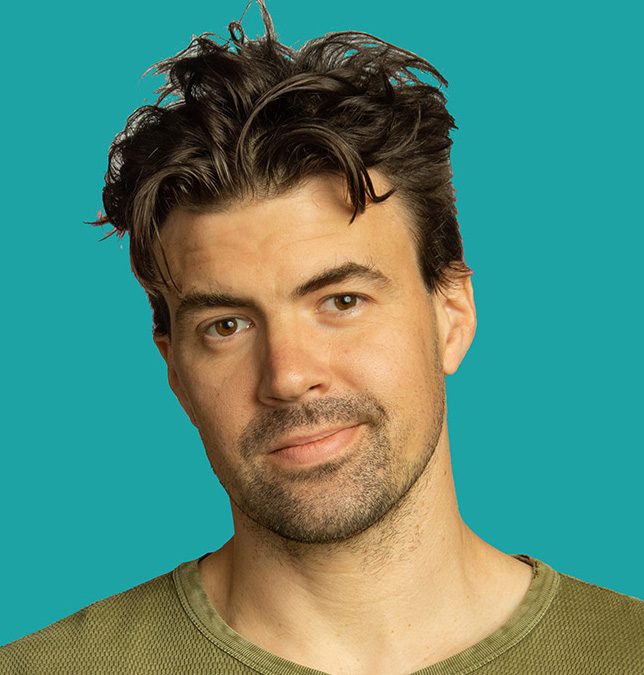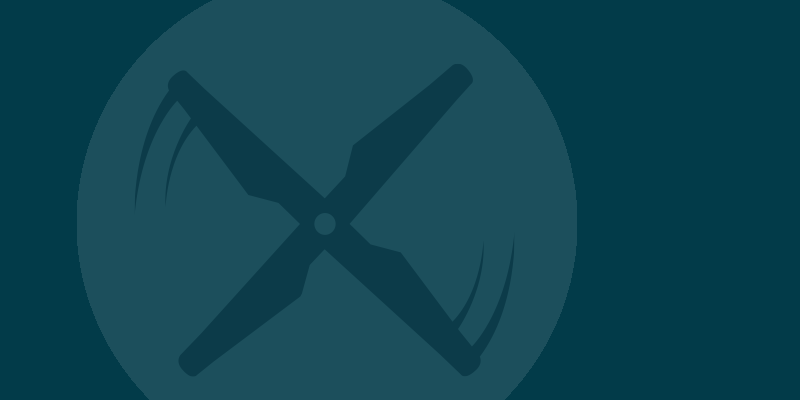Now that Part 107 has defined how individuals and organizations can legally take to the sky, arguably the biggest hurdle associated with operating a drone for commercial purposes has been resolved. With that out of the way, details like insurance have become a top priority, which has created a whole new set of challenges.
Figuring out what type of coverage is needed or required can be a process, as decisions have to be made around whether that coverage should be set up as a one-off or on an ongoing basis. Additionally, there can be complications with applying for and receiving that insurance in the time allotted. In addition, the costs associated with this coverage can be exorbitant. One company is committed to changing the paradigm around all of that.Verifly provides on-demand drone insurance for recreational and commercial flights. Whether you need insurance for a one-off project or on an ongoing basis, Verifly makes securing that insurance incredibly simple and easy via their smart phone app. Users select a flight area to see a real-time price, secure instant approval and are then provided with proof of insurance for their on-the-spot coverage.
Jay Bregman
 Can you tell us a little bit about how Verifly works?Verifly is an app on IOS and Android. You open the app and it draws a quarter-mile radius around you. That’s your coverage area. The app then computes a price for coverage instantly which is based on the risks that it knows about in that coverage area. The price is per hour, and it starts at $10/hour.There’s no application process, and one you put in your payment info, you’ll have instantly purchased a million-dollar policy from a top tier aviation insurer. It’s coverage that can be used for both recreational and commercial endeavors with $10,000 worth of unintentional invasion of privacy coverage to boot. Is the elimination of the hassle associated with securing drone insurance the biggest factor for users that have signed on?It’s really not just about the elimination of that hassle factor. The fact is, the current pricing and structure for drone insurance is less than ideal, and this service makes that especially apparent to anyone who’s even glanced at the details.There are a lot of people trying to figure out how they can build a business around services that are associated with drones. As they navigate this landscape and market, they really don’t want to be paying exorbitant prices associated with insurance when they’re much more concerned with sustaining or maintaining a business. For a market that is developing, it makes sense for people to purchase insurance as they need it, partly because that will also make it easier to pass those costs along in a way that clients actually prefer to be part of.
Can you tell us a little bit about how Verifly works?Verifly is an app on IOS and Android. You open the app and it draws a quarter-mile radius around you. That’s your coverage area. The app then computes a price for coverage instantly which is based on the risks that it knows about in that coverage area. The price is per hour, and it starts at $10/hour.There’s no application process, and one you put in your payment info, you’ll have instantly purchased a million-dollar policy from a top tier aviation insurer. It’s coverage that can be used for both recreational and commercial endeavors with $10,000 worth of unintentional invasion of privacy coverage to boot. Is the elimination of the hassle associated with securing drone insurance the biggest factor for users that have signed on?It’s really not just about the elimination of that hassle factor. The fact is, the current pricing and structure for drone insurance is less than ideal, and this service makes that especially apparent to anyone who’s even glanced at the details.There are a lot of people trying to figure out how they can build a business around services that are associated with drones. As they navigate this landscape and market, they really don’t want to be paying exorbitant prices associated with insurance when they’re much more concerned with sustaining or maintaining a business. For a market that is developing, it makes sense for people to purchase insurance as they need it, partly because that will also make it easier to pass those costs along in a way that clients actually prefer to be part of.  What do you mean?Many of the people using Verifly are splitting out those costs for their clients, and having them pay for it. What they’ll do is they’ll put their certificate of insurance in their invoice. That certificate provides a picture of where they were flying along with the times of the flight. All of that is from a particular job site which everyone can identify very quickly and easily.Since the clients are the ones who generally ask for insurance, having the ability to line item that coverage is something most of them like to see and are then happy to pay for. You couldn’t realistically do that with a policy that was far more generic in nature. Has this service influenced how operators might approach the details of a certain flight or aspect of a project?One of the interesting things we’ve seen is associated with everything being in real time, which includes the pricing. Users will get a quote for a specific project or shot which might be higher than normal because of some detail like a school being inside the coverage area. The vast majority of the time they didn’t know that school was there, so instead they set up a quarter of a mile in the other direction and therefore miss that school completely so they can pay the regular rate.It’s not just about paying less though. It’s more about them realizing that what they were going to do had a higher degree of risk associated with it, and them making a choice to do something with less inherent risk. That’s a win for them and one for us as well. How do you see the issues around insurance evolving as more people take to the sky under Part 107?I think that insurance for commercial operation will become the expectation that most clients have. You could even argue that expectation is already there for the majority of people who are looking to hire a drone pilot in various capacities.The reason behind that is people have started to see the provision of drone services in the same way they see the provision of any other service. You’ll have real estate brokers who will say to drone pilots that they don’t care whether the operator is capturing a picture of a window or flying above a house. Regardless of what they’re doing, they’ll need to have that million-dollar policy secure. It’s becoming part of the standard operating procedure, and having it from the start can represent a real advantage for drone pilots.
What do you mean?Many of the people using Verifly are splitting out those costs for their clients, and having them pay for it. What they’ll do is they’ll put their certificate of insurance in their invoice. That certificate provides a picture of where they were flying along with the times of the flight. All of that is from a particular job site which everyone can identify very quickly and easily.Since the clients are the ones who generally ask for insurance, having the ability to line item that coverage is something most of them like to see and are then happy to pay for. You couldn’t realistically do that with a policy that was far more generic in nature. Has this service influenced how operators might approach the details of a certain flight or aspect of a project?One of the interesting things we’ve seen is associated with everything being in real time, which includes the pricing. Users will get a quote for a specific project or shot which might be higher than normal because of some detail like a school being inside the coverage area. The vast majority of the time they didn’t know that school was there, so instead they set up a quarter of a mile in the other direction and therefore miss that school completely so they can pay the regular rate.It’s not just about paying less though. It’s more about them realizing that what they were going to do had a higher degree of risk associated with it, and them making a choice to do something with less inherent risk. That’s a win for them and one for us as well. How do you see the issues around insurance evolving as more people take to the sky under Part 107?I think that insurance for commercial operation will become the expectation that most clients have. You could even argue that expectation is already there for the majority of people who are looking to hire a drone pilot in various capacities.The reason behind that is people have started to see the provision of drone services in the same way they see the provision of any other service. You’ll have real estate brokers who will say to drone pilots that they don’t care whether the operator is capturing a picture of a window or flying above a house. Regardless of what they’re doing, they’ll need to have that million-dollar policy secure. It’s becoming part of the standard operating procedure, and having it from the start can represent a real advantage for drone pilots.  What does the process look like if something happens? What steps can and should be taken?Should something happen, there will be some third part involvement that is set to take place automatically. Anyone who needs to get that process going can easily get in touch with us via email. The people we have monitoring our claims account are experts in terms of walking a drone operator through what they need to collect and what they need to do to ensure everything is handled properly. Above all else, what’s the number one thing uninsured commercial operators need to consider and think through in terms of coverage?Commercial operators have that distinction for a reason. They chose this as a profession because they decided they wanted to be part of or build a business, but the reality is that you can’t build anything of significance without insurance. There’s just too much to lose without it.Having protection which can be easily and professionally expensed back to a client means that in many cases the coverage costs you nothing. It’s the sort of thing that will soon be seen as a given, and not discussing or providing details about the kind of insurance you’ve secured for a project will be a major red flag.
What does the process look like if something happens? What steps can and should be taken?Should something happen, there will be some third part involvement that is set to take place automatically. Anyone who needs to get that process going can easily get in touch with us via email. The people we have monitoring our claims account are experts in terms of walking a drone operator through what they need to collect and what they need to do to ensure everything is handled properly. Above all else, what’s the number one thing uninsured commercial operators need to consider and think through in terms of coverage?Commercial operators have that distinction for a reason. They chose this as a profession because they decided they wanted to be part of or build a business, but the reality is that you can’t build anything of significance without insurance. There’s just too much to lose without it.Having protection which can be easily and professionally expensed back to a client means that in many cases the coverage costs you nothing. It’s the sort of thing that will soon be seen as a given, and not discussing or providing details about the kind of insurance you’ve secured for a project will be a major red flag. 















Comments